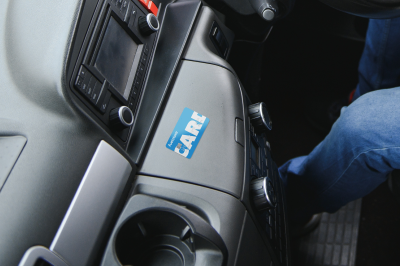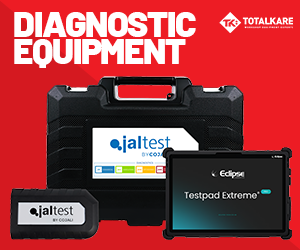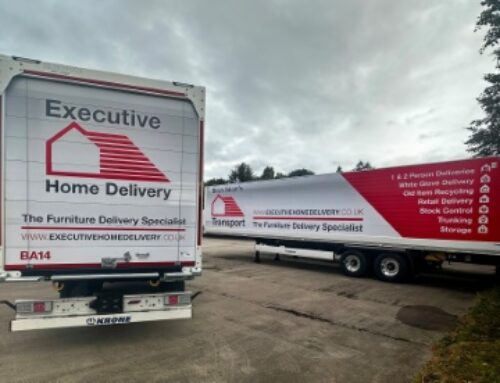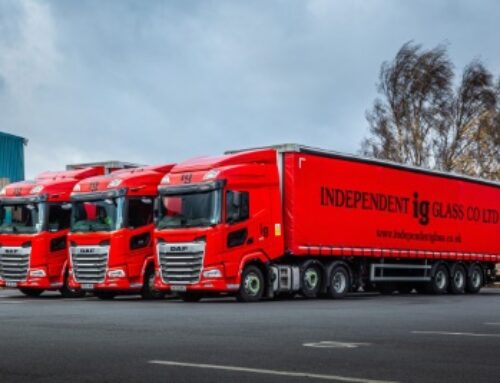The Fuel Store: turning fuel cards into a strategic fleet tool
 While most fleet operators choose a fuel card to save money and reduce admin, many don’t fully unlock the additional value a good provider can offer, according to The Fuel Store.
While most fleet operators choose a fuel card to save money and reduce admin, many don’t fully unlock the additional value a good provider can offer, according to The Fuel Store.
Fuel cards are more than just a payment mechanism, says the company’s managing director Jamie Bridgen: used in the right way, they’re a data-rich resource that can drive efficiency, transparency, and smarter decision-making across your fleet.
“To get the most out of a fuel card, it’s essential to find the right fit,” advised Jamie.
“Check that your provider’s network works well with your fleet’s routes – some work well for local routes, while others focus on major A roads and motorways. Some cover diesel or petrol, while others extend to EV and alternative fuels.
“Think about how your drivers will actually use their cards – fuel type, proximity, station facilities, and ease of use all matter. Multi-brand cards cover a wider range of stations, but single-brand cards often come with a broader range of benefits.”
He also suggests looking for a provider that offers a good online portal.
“Features like VAT-ready paperwork, real-time transaction data, instant limit adjustments, easy card ordering, and even geo-fencing can help you keep track of your spending and reduce the time spent on administration – all of which can have a direct impact on profitability,” Jamie continued.
“We’ve all heard of credit card tarts – people who jump from one card to another, chasing the best rate. Needless to say, the same dance can be done with fuel cards. While this approach can offer short-term financial wins, savvy users will focus on the total cost of ownership, not just headline fuel discounts.
“First, ensure you understand what you’re signing up for. Some providers offer fixed-price cards (you pay a set rate per litre regardless of pump price), some use the pump price (the price at the forecourt), and others offer an additional discount off pump prices. Just like a mortgage, fixed-price cards can protect against market volatility and price fluctuations, but – while they can help with financial planning – they aren’t always cheaper.
It pays to explore whether there are any hidden costs, Jamie suggests.
“Is there a network usage fee, late payment charges or off-network fees? Small fees can add up quickly across multiple vehicles.”
He also highlights the potential of data use to drive smarter decisions.
“Fuel cards generate a wealth of information. Finding a provider that offers good reporting tools can turn that data into a competitive advantage.
“Regularly reviewing fuel consumption by vehicle or driver helps users spot where fuel is used efficiently – and where it isn’t. Over time, patterns begin to emerge. Unusual spending may be a sign of route inefficiencies, poor driving habits, or even misuse or abuse of the fuel card.
“A vehicle showing a steady drop in miles per gallon or an increase in fill-ups could be a sign of poor maintenance or a change in driver behaviour. Identifying these trends early helps prevent small inefficiencies from turning into costly problems.
“Benchmarking your data across vehicles, depots, or routes gives a clear view of where improvements will have the greatest impact. Whether it’s targeted driver training, better route planning, or proactive maintenance, fuel card data can deliver measurable savings and improve fleet performance.”
For those managing larger fleets, using tools to manage cards and vehicles can save both time and money, says Jamie.
“Geo-fencing, for example, allows fleet managers or business owners to restrict card use to approved areas, times, or fuel types to prevent unauthorised spend. Automated records make expense claims, VAT reporting, and compliance far easier.
“Many fuel card providers offer environmental reporting. CO₂ and emissions data make it easier to track your fleet’s carbon footprint and contribute to ESG reporting or sustainability targets. The Fuel Store takes this one step further, offering a way to offset your fleet’s carbon footprint.
“Tools such as Fuel AI use predictive analytics to help flag unusual patterns or potential inefficiencies – helping managers make decisions before small issues become expensive problems. Meanwhile, The Fuel Store Telematics offers location, speed, and driving behaviour data, which, when combined with fuel spend, allows fleets to link costs directly to driver performance and route efficiency. Together, these tools turn standard fuel card data into a strategic asset, enabling smarter, data-led management across the fleet.”
He added: “Your relationship with your provider shouldn’t end after you sign up. A good provider will keep in touch, helping you find other ways to save. Account managers should help you to analyse spending patterns, then suggest changes or adjust network access or pricing as your needs evolve – especially if your routes, fleet size, or fuel types have changed.
“Put simply, a proactive provider who understands your business needs can deliver far more value than a purely transactional supplier.”












